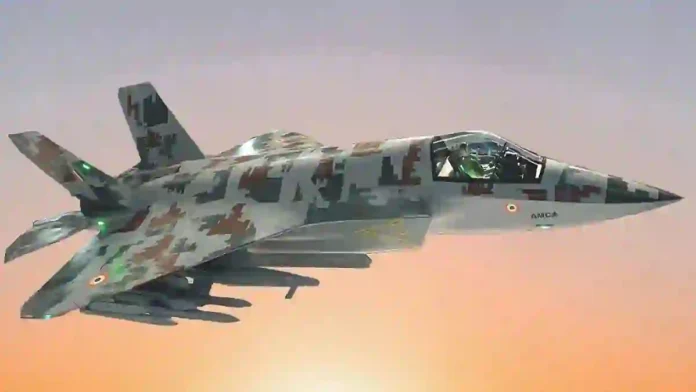India’s AMCA Stealth Fighter: A Strategic Leap Toward Fifth-Generation Air Power
India’s long-standing ambition to join the exclusive league of nations with indigenous fifth-generation stealth fighter aircraft has taken a decisive step forward with the Defence Ministry’s recent approval of the Advanced Medium Combat Aircraft (AMCA) Program Execution Model. This move signals the transition from years of planning and feasibility studies to the active development phase, positioning India to bolster its air power and strategic autonomy in a rapidly evolving regional security environment.
India’s quest for a fifth-generation fighter began in the early 2000s, spurred by the induction of advanced stealth fighters like the US F-22 Raptor and the growing need to replace ageing MiG-21 and Mirage 2000 fleets. Initial efforts included a joint venture with Russia to develop the Sukhoi/HAL Fifth Generation Fighter Aircraft (FGFA) based on the Su-57. However, disagreements over technology transfer and escalating costs led India to withdraw from the partnership in 2018, redirecting focus toward a fully indigenous solution—the AMCA.
Read- Navy Boosts Firepower With Indigenous Anti-Aircraft Gun Barrels
Read- Defence Companies Gear Up For Bidding War – What’s Next After QRSAM Air Defence System
Read- Rudrastra Hybrid UAV Passes Key Army Trial At Pokhran With Precision Strike And 170-Km Range
AMCA Program: Structure And Features
The AMCA is envisioned as a medium-weight, twin-engine, single-seat, multi-role stealth fighter, designed to deliver deep penetration, advanced stealth, and all-weather operational capability. Key features include:
Stealth And Survivability: Low radar cross-section, internal weapons bay, and diverterless supersonic intake for minimal detectability.
Performance: Supercruise capability (flying supersonic without afterburners), maximum take-off weight of 25 tons, and operational ceiling up to 55,000 feet.
Avionics And Systems: Advanced avionics, network-centric warfare systems, artificial intelligence-powered electronic pilot, integrated vehicle health management, and AESA radar for long-range engagement.
Armament: Internal carriage of 1,500 kg and external payload of 5,500 kg, supporting long-range air-to-air missiles and precision-guided munitions.
Development Phases: The AMCA will be developed in two variants—MK-1 powered by the General Electric F-414 engine and MK-2 with a more powerful indigenous or co-developed engine.
Execution Model And Industrial Strategy
The newly approved execution model mandates a public-private partnership, with Hindustan Aeronautics Limited (HAL) leading production alongside private sector partners. The Aeronautical Development Agency (ADA) will issue an Expression of Interest (EoI), inviting Indian companies to participate independently, as joint ventures, or consortia. This model aims to harness domestic expertise and accelerate the transition from prototype to production, fostering self-reliance (Atmanirbharta) in aerospace manufacturing.
Timeline And Milestones
2024: Cabinet Committee on Security (CCS) approves full-scale engineering development of five AMCA prototypes at a cost exceeding ₹15,000 crore.
2025: Defence Minister Rajnath Singh greenlights the execution model; full-scale model unveiled at Aero India 2025.
2028-2029: Prototype rollout expected.
2032-2033: Manufacturing phase to commence.
2034-2035: Targeted induction into Indian Air Force service, with DRDO committed to delivery by 2035.
Strategic Imperative
India’s push for a fifth-generation stealth fighter is driven by an increasingly hostile neighbourhood, with China rapidly expanding its J-20 fleet and Pakistan seeking to acquire advanced jets like the J-35A. The Indian Air Force currently operates 31 squadrons, well below the sanctioned strength of 42, making the induction of AMCA critical to maintaining air superiority and deterrence.
Stealth fighters are essential for penetrating heavily defended adversary airspace, neutralising high-value targets, and ensuring survivability against sophisticated missile systems. The AMCA’s integration of advanced sensors, AI, and networked warfare capabilities is expected to provide a qualitative edge in future conflicts.
Conclusion
The AMCA program marks a watershed moment in India’s defence modernization, aiming to deliver a cutting-edge indigenous stealth fighter and reduce reliance on foreign technology. The competitive execution model and industry partnerships reflect a new approach to large-scale defence projects, promising to reshape India’s aerospace landscape and secure its strategic interests in an uncertain regional environment.
Agencies




